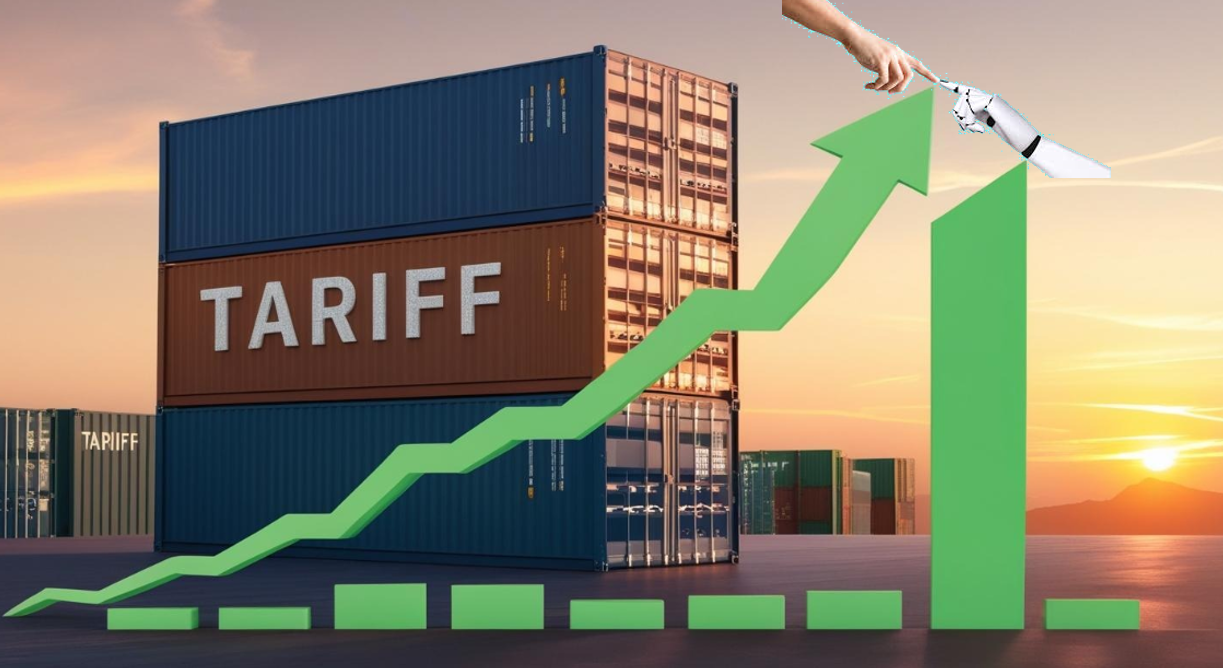
Imagine this!
New tariffs are announced with merely 30 days’ notice for implementation. While most manufacturers rush to estimate the damage, your company has set the options in motion.
Because AI-powered tools are used for months to run simulations, teams are well apprised of the risks. This allows organizations to prequalify alternate suppliers and alter the messaging to customers. This isn’t science fiction—it’s the kind of readiness that forward-thinking manufacturers are already building.
The US has announced a new wave of tariffs on electric vehicle components, solar gear, semiconductors, and rare minerals. More tariffs are expected to follow, which have the potential to reshape sourcing costs and vendor relationships almost overnight.
Executives are asking urgent questions:
These are not theoretical concerns—they’re showing up in boardrooms, investor calls, and CFO dashboards.
This time, however, companies have a new tool: generative artificial intelligence.

The capabilities of AI have evolved beyond processing just spreadsheets and costs. AI can now glean data from trade negotiations, economic trends, political signals and supplier performance records. The gleaned data can be fed into scenario models to offer company leaderships a view of what’s coming—before it hits.
What’s admirable is how these tools simulate the knock-on effects. AI can compare supplier options across parameters such as geography, risk, cost, lead time, and even revalidation timelines.
This ability helps companies bring up trade-offs at surprising speed:
These aren’t just what-ifs—AI can help make the answers actionable.
Tariff-driven changes don’t stop at sourcing. Even one change to a component can cause a ripple effect across operations:
AI can be used for detecting these dependencies and isolating the areas that need to be addressed immediately.
It is important to adapt factory production plans And reassess work-in-progress inventories for the following conditions:
What’s safe to proceed? What must be paused?
AI-enabled planning tools can help with recalculating schedules, reassigning work orders, and brainstorming alternate production sequences. Through these steps, downtime can be significantly reduced, and backlogs can be better managed.

Tariffs are often known to force changes to the bill of materials. This can impact not only delivery dates, but also performance. A motor that runs two degrees hotter or a battery that charges 15 minutes slower may still meet specifications—but this can become very obvious to customers who experience the delay.
AI tools can be used in such scenarios to track key changes in user experience, create customer briefs and equip sales teams with updated messaging to help companies stay ahead of the conversation.
Companies can thereby proactively inform customers about what to expect rather than waiting for complaints—building trust through communication.
The most advanced firms are now building AI-powered response playbooks, which are decision frameworks that trigger specific actions when certain key conditions are met.
For example, if a new tariff pushes the cost of components above a certain limit, the system
Think of it like the COVID-19 pivot to video conferencing. In 2020, Zoom became an emergency and necessary alternative. Today, it has been integrated to an enterprise’s communication and collaboration framework across time zones.
Or consider the Y2K bug—once a compliance monster, it forced firms to cleanse their data and modernize legacy systems. Similarly, tariffs may be today’s crisis, but with generative AI, it has the potential to become tomorrow’s advantage.
One hidden side effect of supplier shifts is foreign exchange (FX) exposure. Sourcing from a new country might introduce new currency risks, which if not hedged, can cause major margin erosions with even small shifts in exchange rates.
With AI-enabled treasury tools, an organization can seamlessly track FX exposure in real time. By simulating diverse sourcing paths and considering a plethora of hedging strategies, AI enables CFOs to adjust financial plans in sync with changes iub operational plans—thus keeping costs predictable even in a dynamic market.
Start by mapping your bill of materials and identify high-risk components—those with limited sources, long lead times or high costs. Thereafter prequalify backup suppliers and build response playbooks using AI that can advise organizations of the best response strategy to new tariff introductions or similar setbacks.
Invest in AI tools that can demonstrate the impact of policy headlines and suggest supplier choices, FX risk, SOP updates and customer communication. Run full simulations every month in all functional areas including finance, legal, operations, procurement and customer teams.
The goal is clear: speed, clarity and coordination.

The next round of tariffs is coming!
While some companies will react slowly, others may be highly equipped with precision responses. They’ll update testing, switch suppliers, revise schedules, keep customers informed and hedge currency risk, —all within a matter of days, not even weeks.
AI doesn’t just help them respond faster but it helps them plan, coordinate and optimize margins better.
And that advantage won’t end when the tariffs regime fades—it will grow stronger over time and extend to more aspects of business.
Ashwin Abhyankar is a consultant, specializing in helping finance and operations teams use AI and advanced analytics to navigate disruption, protect margin, and build more agile organizations. At QFocus, he is SME-Supply Chain Analytics, imparting advanced analytics and data-driven insights to optimize and enhance supply chain processes, improve operational efficiency, and support strategic decision-making for QFocus’ manufacturing customers.